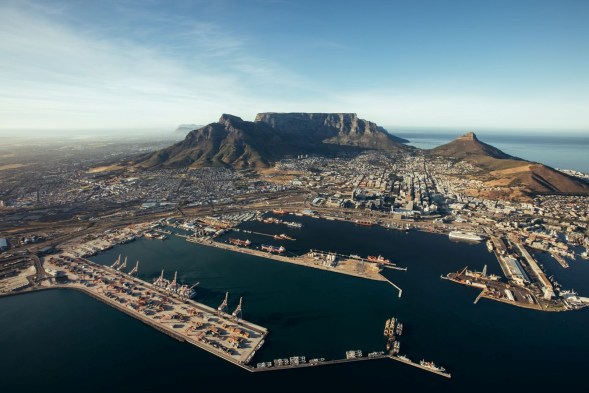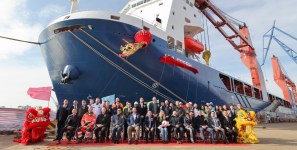5 Major Ports in Africa That Are Strengthening African Trade
Africa boasts a 26,000-kilometre-long coastline dotted with over 100 ports and harbours. However, despite this extensive maritime access, none of Africa’s ports rank among the top 10 busiest in terms of annual container traffic. Unfortunately, the development of sea ports in Africa has lagged behind other parts of the world in terms of efficiency and capacity for handling international cargo.
A couple of global port operators are tackling this discrepancy, including Hutchison Ports, DPWorld, APM Terminals, and ICTSI, which operates five major African ports. Continuously looking for opportunities worldwide, the company recently announced the expansion of its portfolio to include DCT Pier 2 in Durban, South Africa—Transnet’s largest container terminal.
The state of ports in Africa in 2023
According to the World Bank’s Container Port Performance Index 2021, the top 20 most efficient container ports in the world are all located in Asia and Europe. The highest-ranking African port is the Port of Tanger Med, which is ranked 34th on the list.
Historically, there are a few challenges to developing sea ports in Africa. Many African ports have been underfunded for many years, which has led to outdated infrastructure and equipment. This can make it difficult for them to handle large volumes of cargo efficiently.
There’s also the geographic and socio-political reality of shipping in Africa that causes interconnectivity challenges. Many African ports are not well-connected to the road and rail networks of their respective countries, which can make it difficult to transport cargo to and from the ports.
Nevertheless, there are a number of African ports that are making significant progress in improving their efficiency and capacity. For example, the Port of Durban in South Africa and the Port of Tanger Med in Morocco are now among the most efficient ports in the continent. These two and more are making notable contributions to the economies of the region and changing the landscape of global shipping.
What are the major ports in Africa?
Foreign investments have led to significant upgrades at major seaports across Africa. These are the major ports in Africa today—and how they’re contributing to the economies of the countries around the continent.
Port of Mombasa, Kenya
The Port of Mombasa, operated by the Kenya Ports Authority, is the largest port in East Africa and a central hub for trade between Africa and Asia. It has expanded in recent years, and primarily exports tea, coffee, horticultural products, and other goods from inland African countries like Uganda, Burundi, Rwanda, eastern Congo, Ethiopia, and the southern part of Sudan. Approximately 35.9 million tonnes of cargo and 1.49 million TEUs were handled at the port in 2020.
Kenya’s major port in Mombasa also imports petroleum products, consumer goods, and machinery from Western Europe, Asia, America, and the Far East ports. In Kenya, trade contributed 15.6 % of Kenya’s GDP in 2020, making the port a major contributor to economic success in the country.
Port of Durban, South Africa
While there are many ports in South Africa, the Port of Durban is a major commercial hub on the East African coast. The Port of Durban accounts for around 60% of trade revenue for South Africa and links products traveling between the Far East, Middle East, South and North America, Europe, and Australia.
Development continues at this key port. Transnet SOC Ltd selected ICTSI as the preferred bidder for the 25-year joint venture to develop and operate Durban Container Terminal (DCT) Pier 2.
“Our goal is to maximize the Port of Durban’s potential through responsible operations. We look forward to collaborating with Transnet and all the stakeholders involved, who share our vision for a world-class terminal that serves as a catalyst for economic growth in the region,” said Christian R. Gonzalez, ICTSI’s executive vice president.
Port of Toamasina, Madagascar
The Port of Toamasina may not be the biggest port in the world, but it’s among the most efficient—which is why it warrants a mention in this list of major ports in Africa.
Strategically located on the eastern coast of Madagascar, Madagascar International Container Terminal Services Ltd. (MICTSL)is a key port facility in the Indian Ocean connecting African and Asian trade. The Port of Toamasina handles 90% of Madagascar’s container traffic.
Since then, the terminal has been modernised to make port operations run more efficiently, reports The Africa Logistics.
Port of Matadi, Congo
Not all of Africa’s ports are located on the coast. Matadi is the most important port on the Congo River, handling 90% of maritime traffic (not including oil tankers). Approximately 150 kilometers upstream from the Atlantic, Matadi is a major import and export point for the whole of D.R. Congo.
The Port of Matadi is the only terminal in DRC with mobile harbor cranes allowing gearless vessels to operate, and empty depot services accepting empty containers before vessel arrival. This allows Matadi to have the fastest turnaround time in the region for both trucks and vessels.
Matadi enables the transport of the DRC’s rich agricultural exports, such as coffee, palm, oil, cotton, and sugar. Its mining sector, however, has been driving the economy with copper, cobalt, gold, coltan, tin, zinc, and diamonds as among its major exports.
Port of Tanger Med, Morocco
The Port of Tanger Med is a new port complex located near the Strait of Gibraltar. It is one of the largest ports in the Mediterranean Sea and is well-positioned to serve as a hub for trade between Europe, Africa, and Asia. Tanger Med is a central hub for the export of automobiles, textiles, and agricultural products, and for the import of petroleum products, machinery, and consumer goods. It comprises four container terminals, two of which are operated by APM Terminals.
“Tanger-Med handled 7,174,870 TEUs in 2021, and a total cargo volume of 101,055,713 passed through its general cargo terminal. The RORO terminal crossed the 400,000 mark in the same year, a remarkable achievement,” wrote Marine Insight. “This tremendous upward growth was achieved by port digitisation, reduction in waiting times, resumption of industrial exports and upgradation of port equipment.”
Empowering the future of ports in Africa
Africa’s maritime ports hold so much potential for improvement. Investments from the private sector have led to the development of more efficient and more competitive port facilities like Onne Multipurpose Terminal in Nigeria and Kribi Multipurpose Terminal in Cameroon, both operated by ICTSI. As the largest independent terminal operator, ICTSI is working diligently to develop, modernise, and upgrade ports around the world, including in AfricaI.
Learn more about ICTSI Africa’s ongoing projects and future initiatives, and stay informed about the evolution of vital port infrastructure across the continent.





Leave a Reply